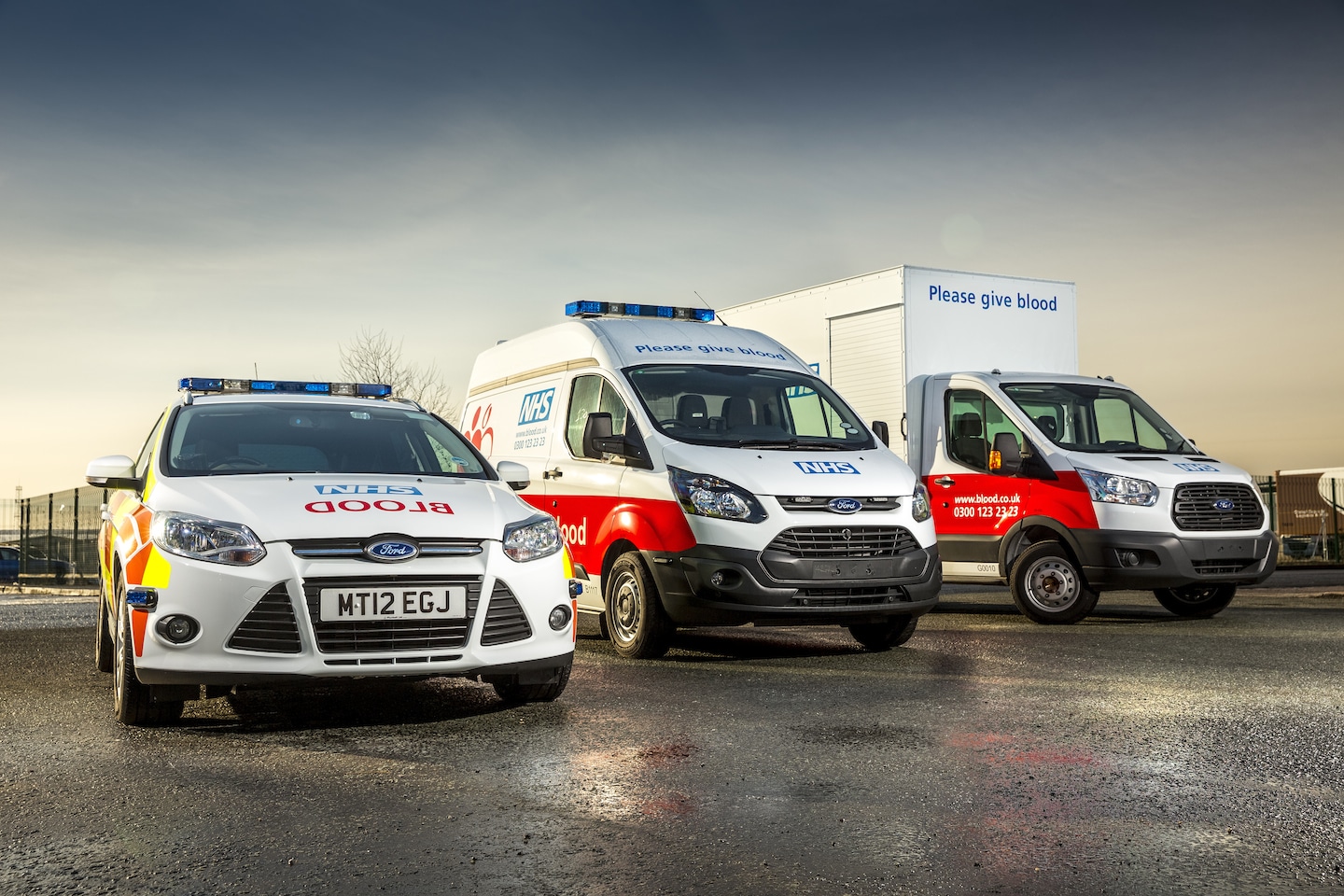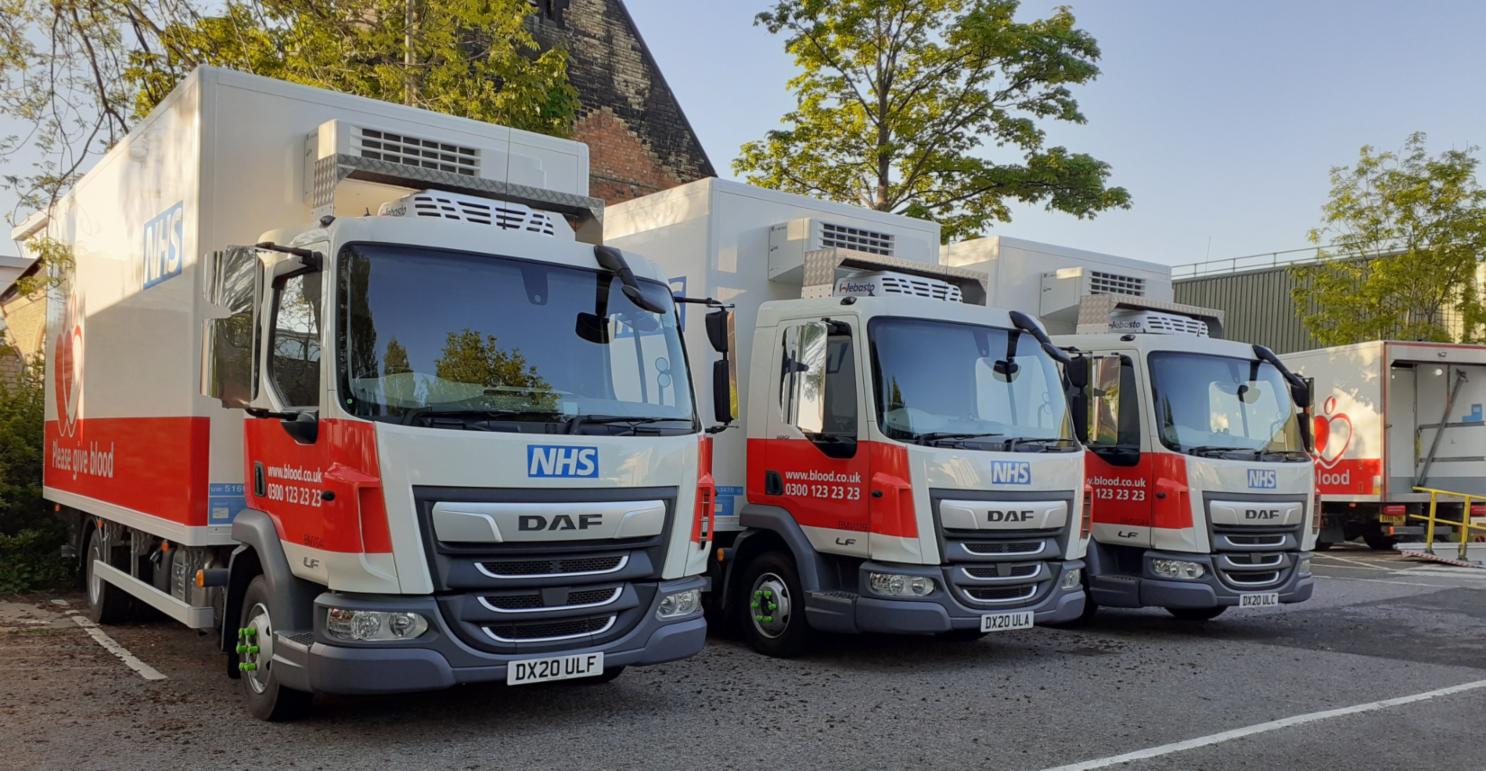The NHS Blood and Transplant fleet are seeing amazing Return On Investment using Video Telematics, which helps them defend against insurance claims, lower claim costs and improve driving behaviour.
“The Video Telematics equipment more than pays for itself,” says John Lowden, National Fleet Engineering Manager at NHS Blood and Transplant. He adds:
“Without a doubt, VUE equipment lowers claim costs and increases the efficiency of the claims handling process. I pushed to get vehicle cameras for our fleet as I knew the benefits and Return On Investment that VUE’s Video Telematics equipment would provide, and have been really pleased with the results.”
Video Telematics In The NHS

NHS Blood and Transplant manage NHS blood donation services in England and organ donation services across the UK. They provide many vital services, including collecting and distributing blood, plasma and platelet donations, supporting patients and donors throughout the organ donation process and much more.
Their fleet consists of 337 vehicles in total, with 290 vehicles (86%) fitted with Video Telematics. Their vehicles are fitted with a complete Video Telematics solution with VMC8 units, VUE side cameras and a VUE front and VUE rear camera for a complete 360° view of the vehicles.
On working with VUE, John Lowden says:
“I would rate VUE equipment 10/10 as it never lets us down. We work really well together, and the assistance that we’ve received from VUE throughout the onboarding process and beyond has been invaluable.”
Return On Investment Using Video Telematics

After an incident, the footage recorded by the VMC8 units helps the NHS Blood and Transplant fleet determine what happened and how best to deal with a claim.
John Lowden comments:
“We primarily use VUE’s equipment to help defend against claims and we’ve definitely seen a Return On Investment using Video Telematics. After an incident, we’ll review the footage to see what happened, then determine whether to defend the claim with the footage recorded or admit liability on the odd occasion it is needed. The Video Telematics equipment helps cut down claim handling time and lowers claim costs. The VMC8 footage recorded is invaluable to efficiently handling claims and helps preserve the reputation of the company and our drivers.”
“I can think of a particular incident when the VMC8 footage really helped us. One of our transit vans was driving on the motorway, unfortunately collided with a mobile crane and damaged it. We immediately reviewed the footage, understood what happened and admitted liability which lowered the claim cost and helped resolve that claim quickly.”
NHS Blood and Transplant also use VMC8 footage to determine how to improve driver behaviour to lower accident frequency and reduce the number of future claims.
John Lowden says:
“The footage recorded by the VMC8 units is also invaluable as a driver coaching tool. We’ll review incident footage to identify how to improve driving behaviour and determine the measures we can put in place to get results such as coaching or mentoring programmes. The VMC8 footage helps us improve driving behaviour across our fleet which reduces accident frequency, and lowers claims and claim costs.”
~
If you’d like to demonstrate fantastic Return On Investment using Video Telematics for your fleet, then click below to get started!
You can also download a PDF copy of this case study below if you’d like to send it to any relevant third parties.
If you’d like to learn more about how our Video Telematics solutions help fleets in the Emergency Services sector, then go to our page below:
If you’d like to learn how other fleets are seeing amazing Return On Investment using Video Telematics, read our most popular case studies:
- 65% Reduced Accident Rates Using VUEtech for Johnsons Workwear
- Low Bridge Alerting System Successfully Trialled with XPO Logistics
You can also find many more case studies in our case studies section.

